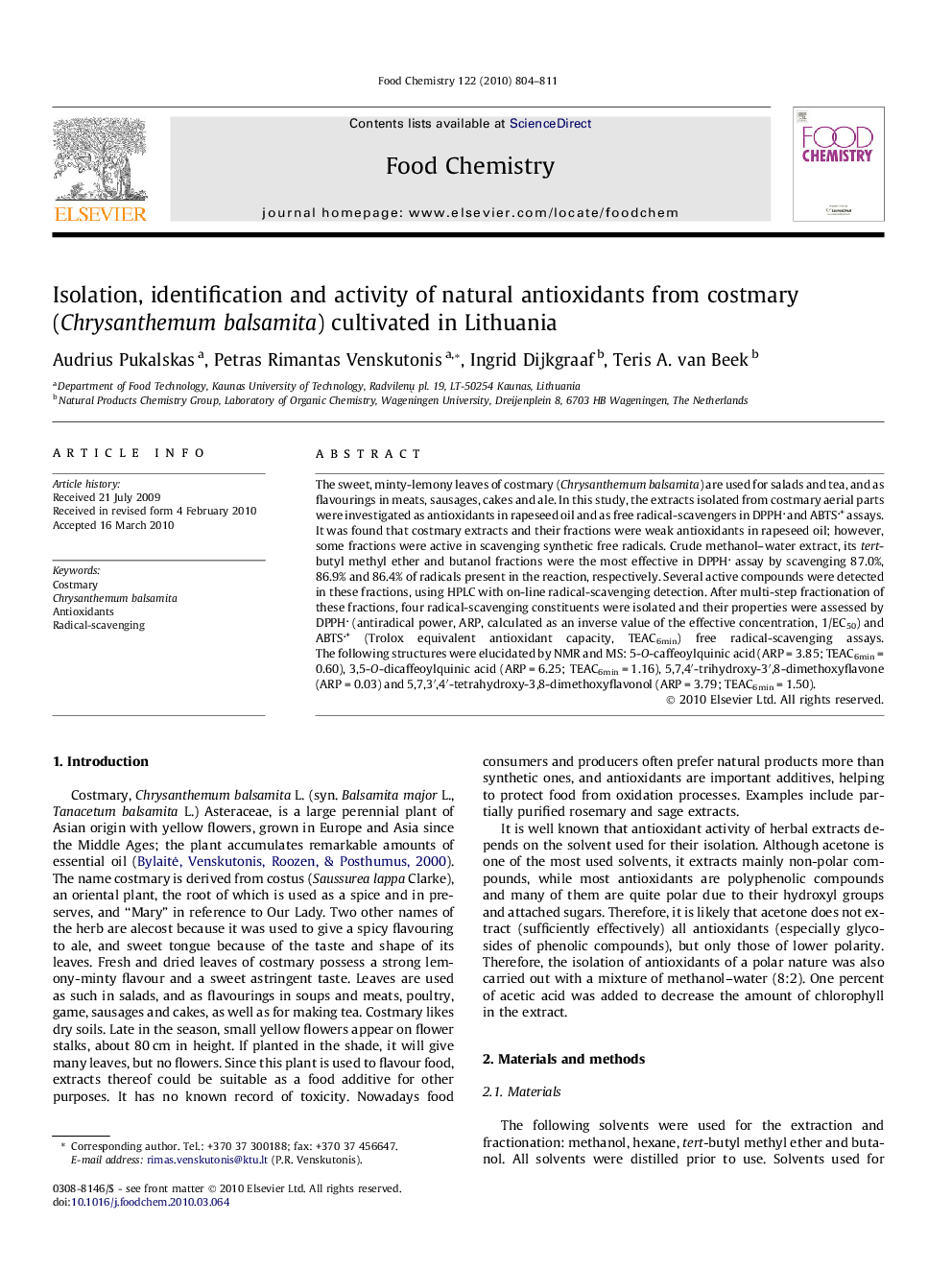| Article ID | Journal | Published Year | Pages | File Type |
|---|---|---|---|---|
| 1190135 | Food Chemistry | 2010 | 8 Pages |
The sweet, minty-lemony leaves of costmary (Chrysanthemum balsamita) are used for salads and tea, and as flavourings in meats, sausages, cakes and ale. In this study, the extracts isolated from costmary aerial parts were investigated as antioxidants in rapeseed oil and as free radical-scavengers in DPPH and ABTS+ assays. It was found that costmary extracts and their fractions were weak antioxidants in rapeseed oil; however, some fractions were active in scavenging synthetic free radicals. Crude methanol–water extract, its tert-butyl methyl ether and butanol fractions were the most effective in DPPH assay by scavenging 87.0%, 86.9% and 86.4% of radicals present in the reaction, respectively. Several active compounds were detected in these fractions, using HPLC with on-line radical-scavenging detection. After multi-step fractionation of these fractions, four radical-scavenging constituents were isolated and their properties were assessed by DPPH (antiradical power, ARP, calculated as an inverse value of the effective concentration, 1/EC50) and ABTS+ (Trolox equivalent antioxidant capacity, TEAC6min) free radical-scavenging assays. The following structures were elucidated by NMR and MS: 5-O-caffeoylquinic acid (ARP = 3.85; TEAC6min = 0.60), 3,5-O-dicaffeoylquinic acid (ARP = 6.25; TEAC6min = 1.16), 5,7,4′-trihydroxy-3′,8-dimethoxyflavone (ARP = 0.03) and 5,7,3′,4′-tetrahydroxy-3,8-dimethoxyflavonol (ARP = 3.79; TEAC6min = 1.50).
